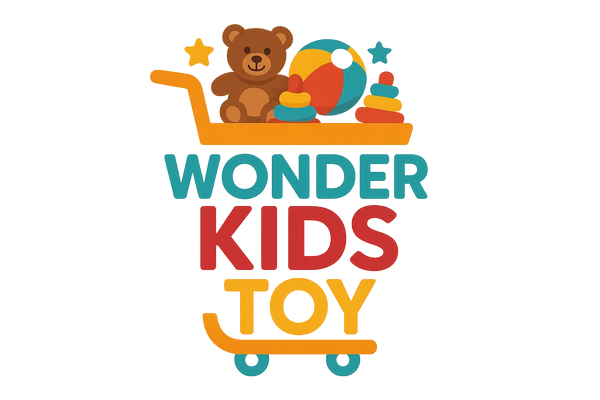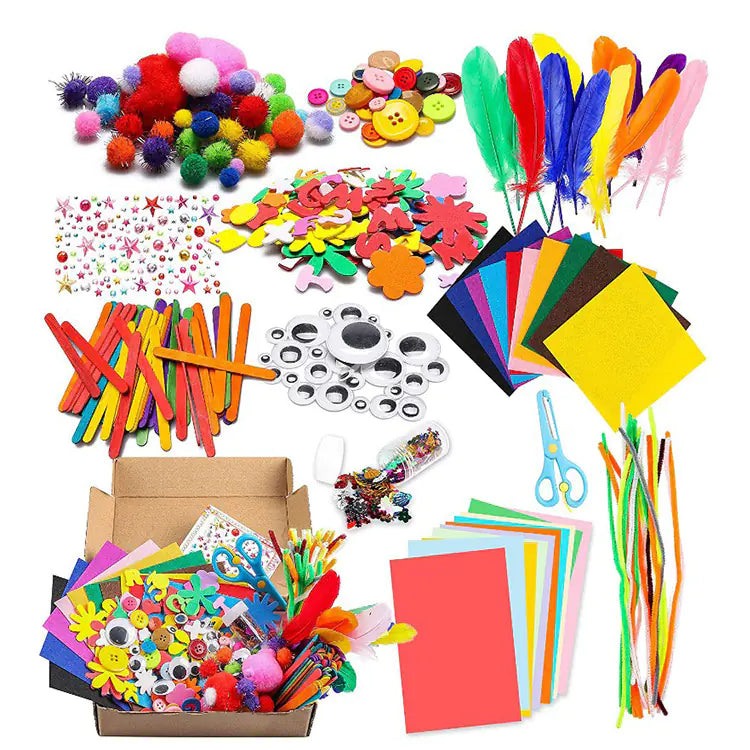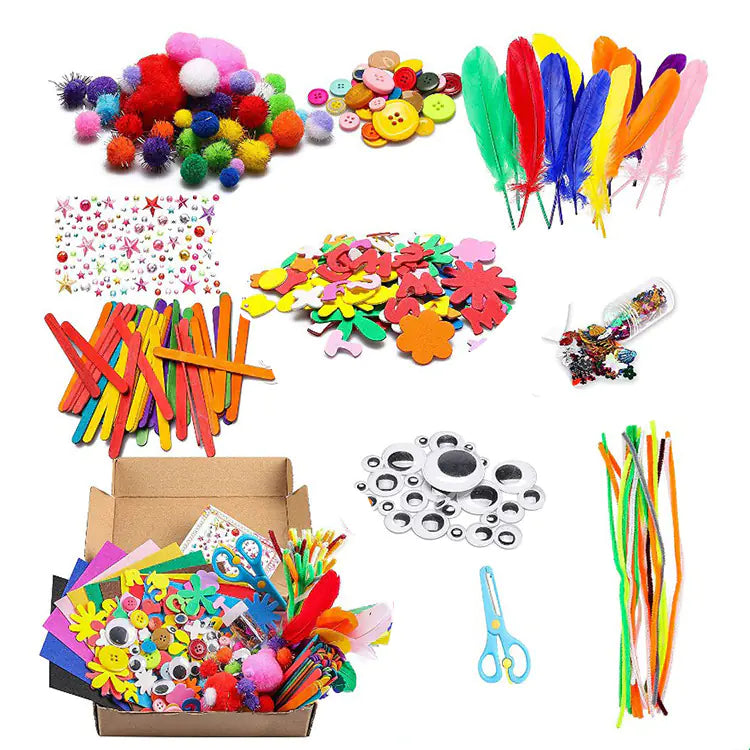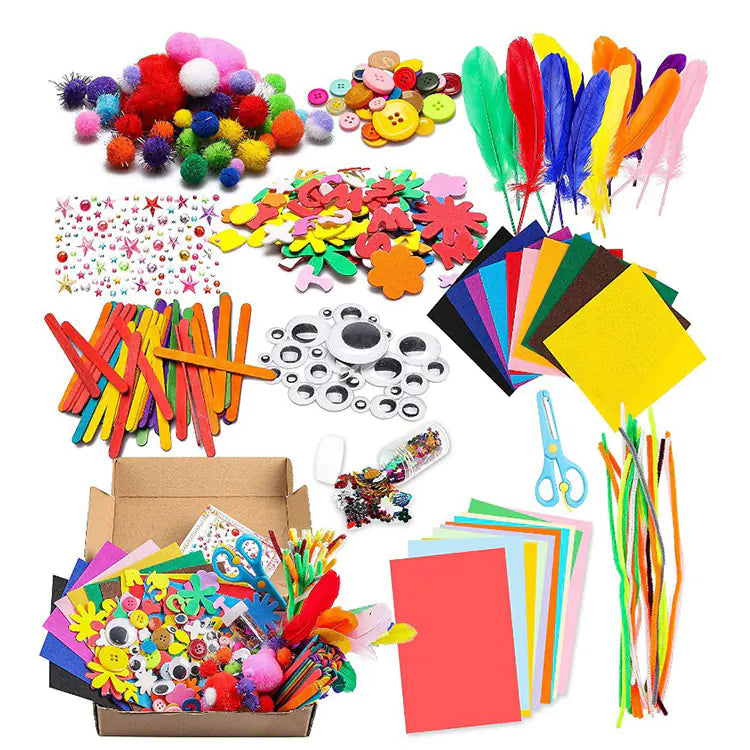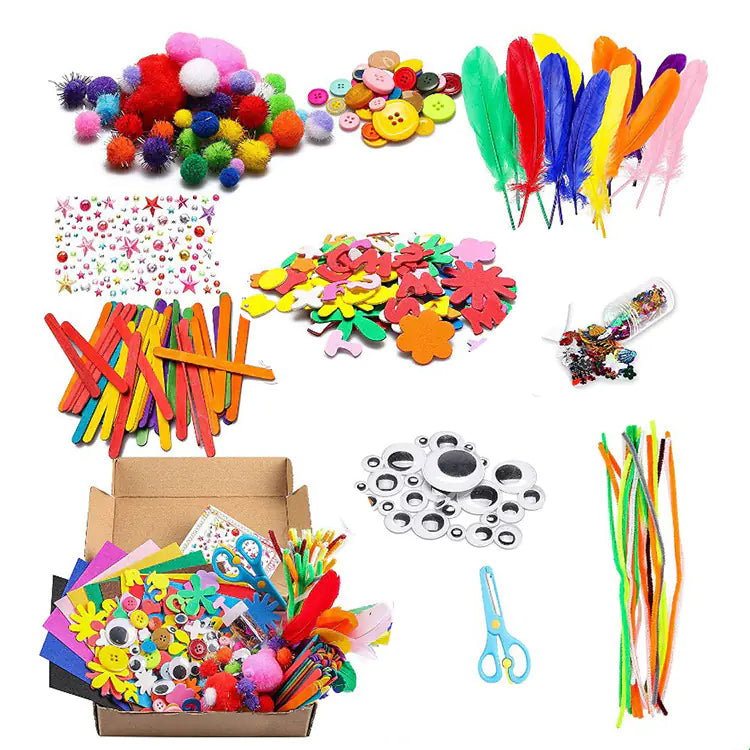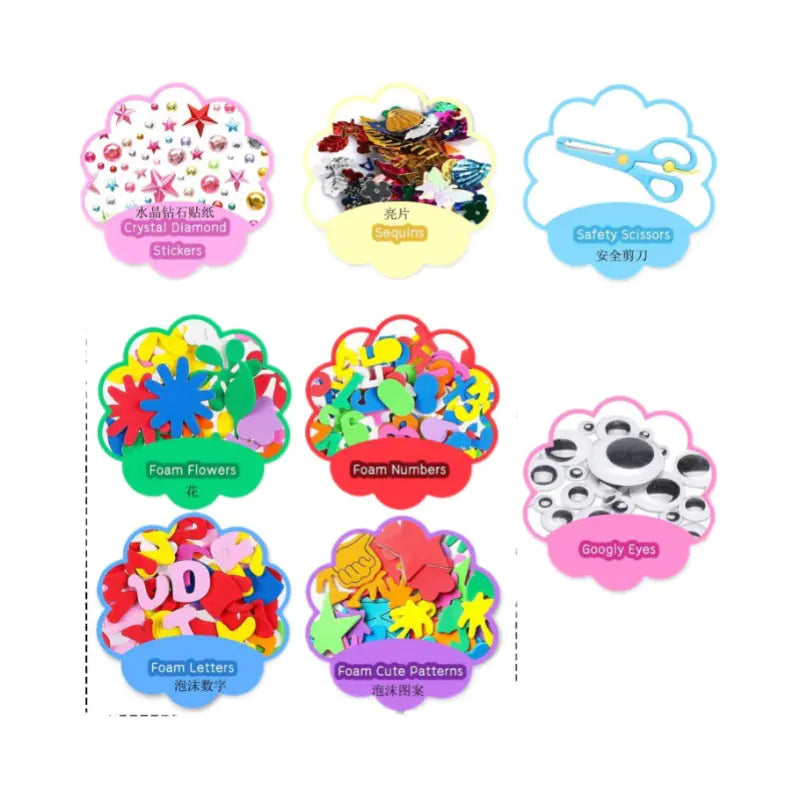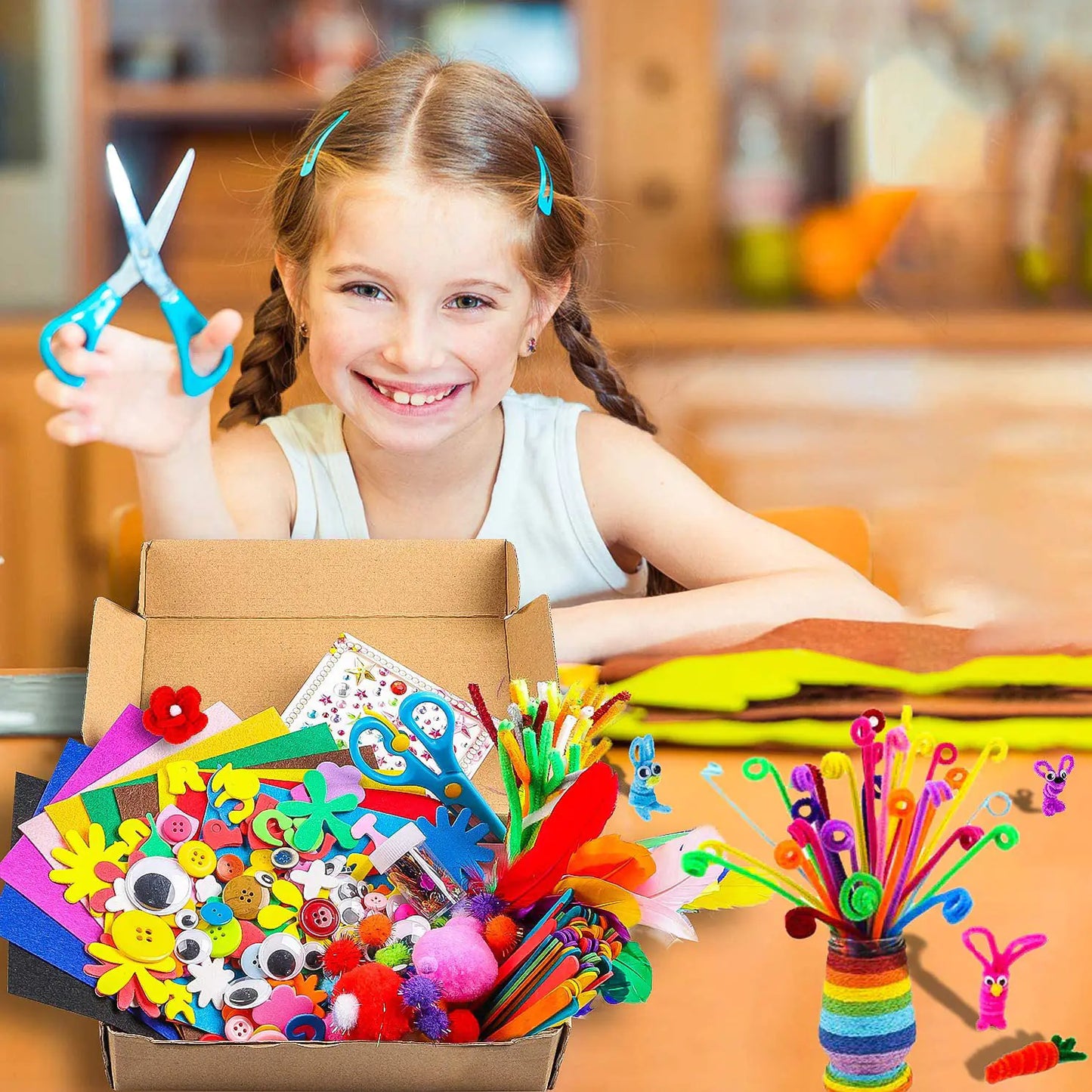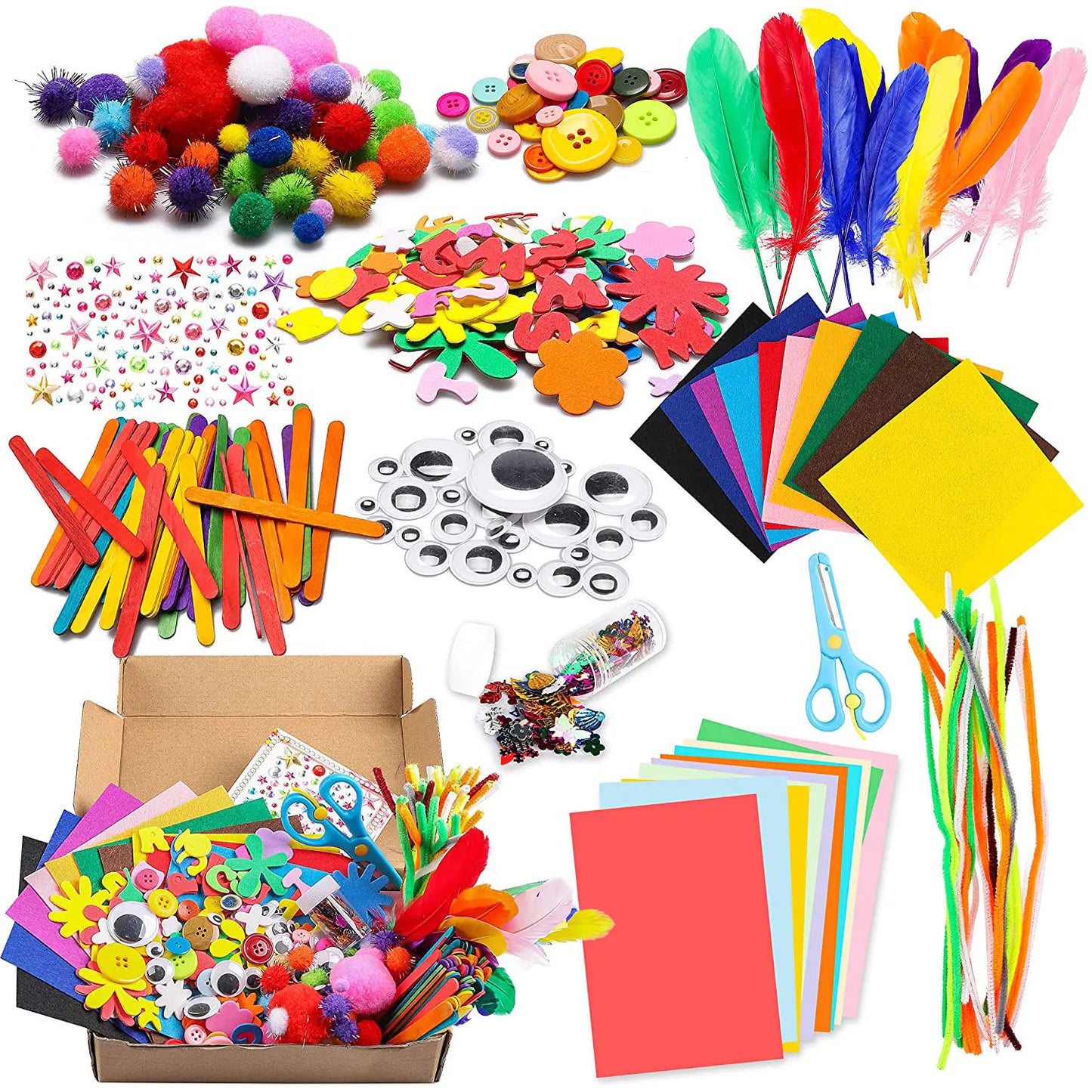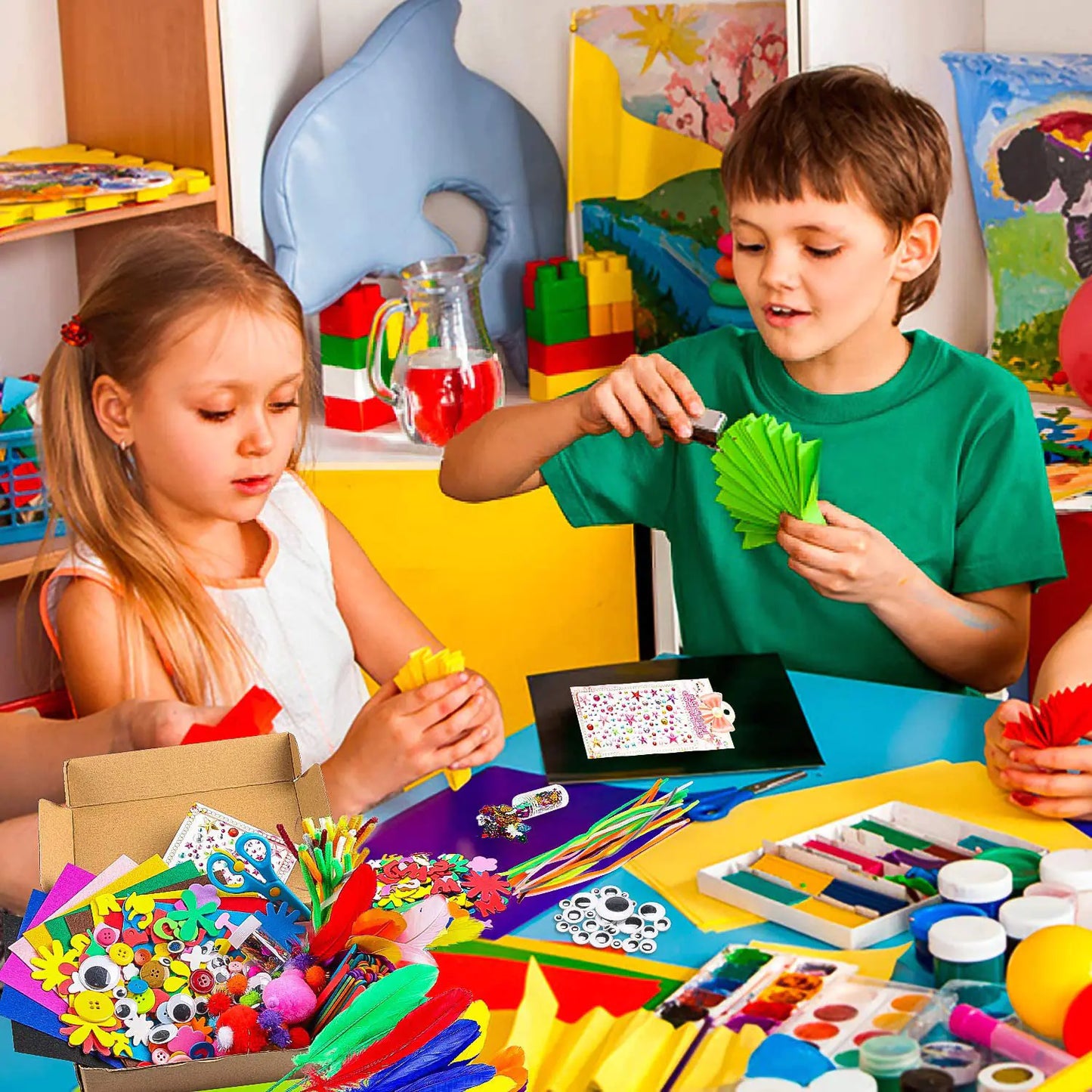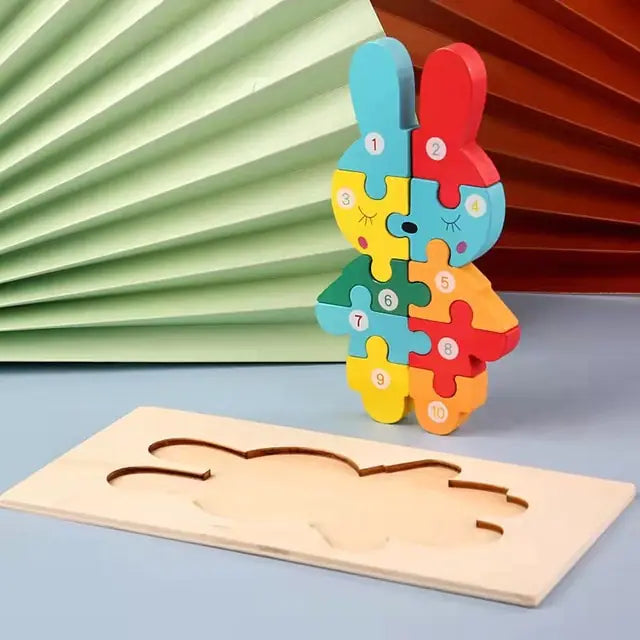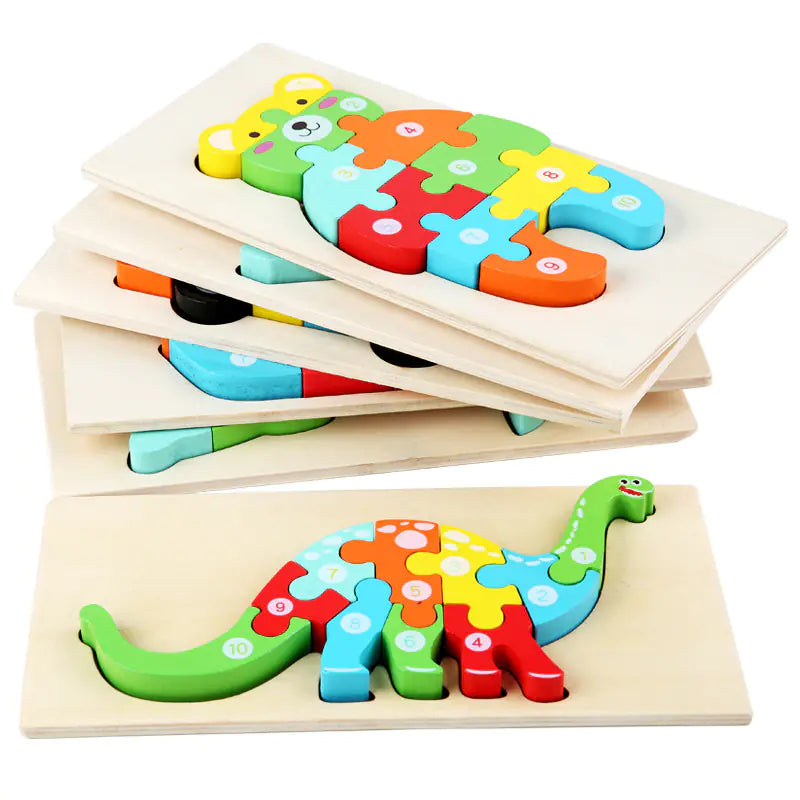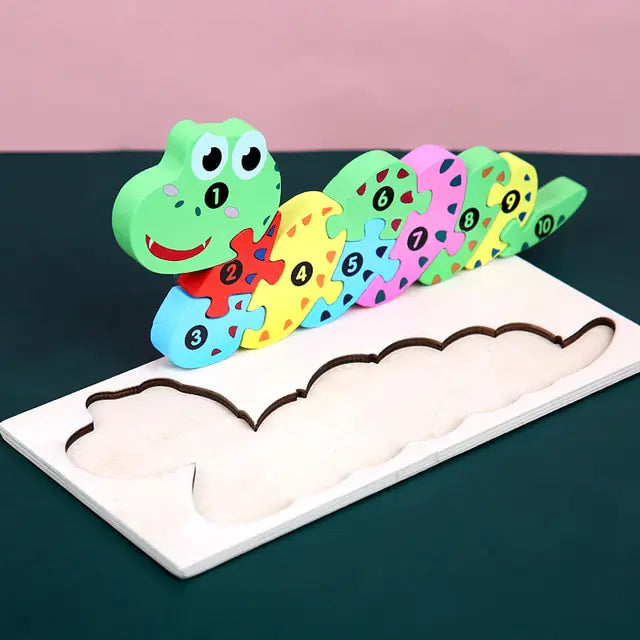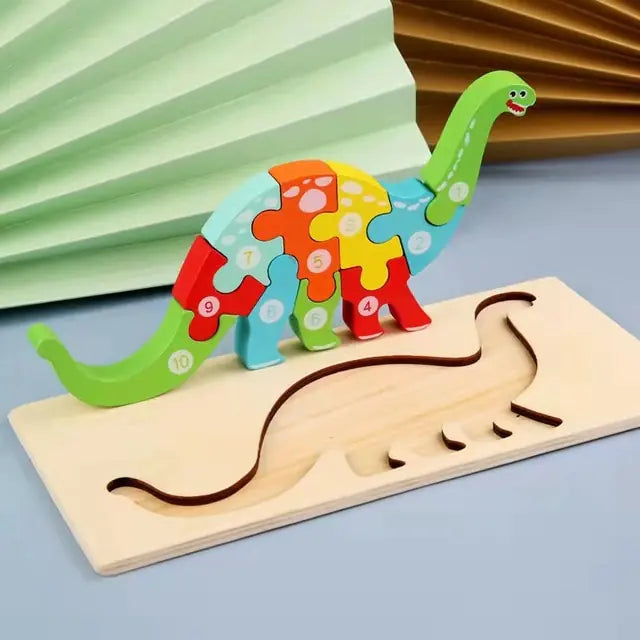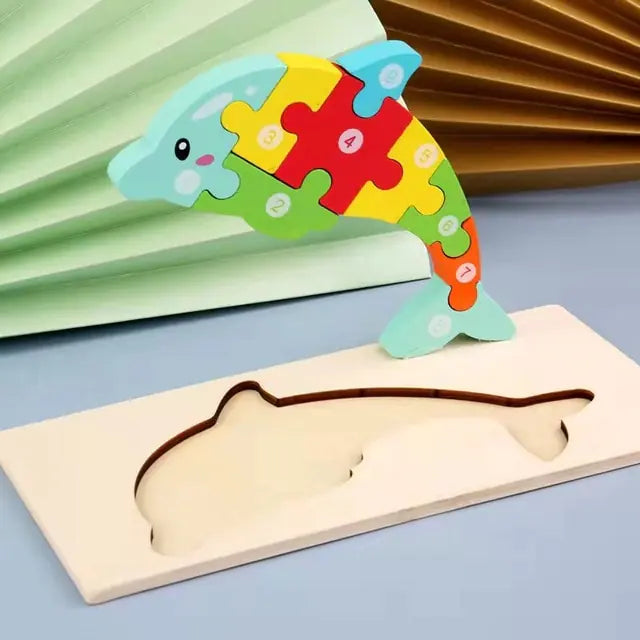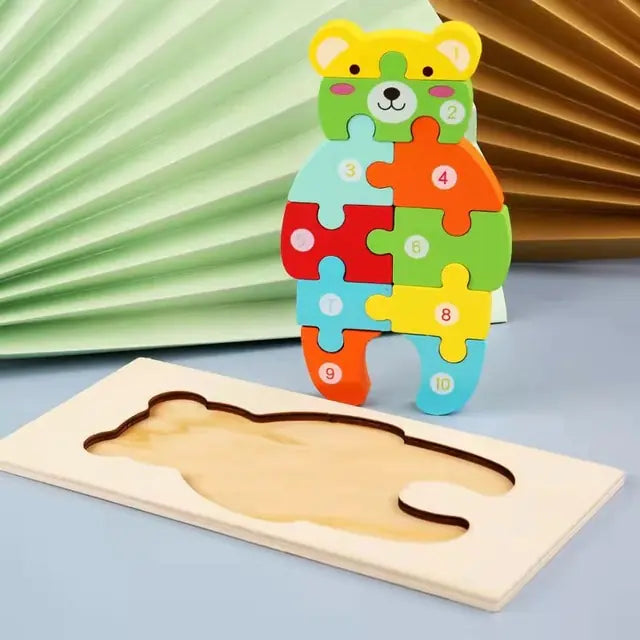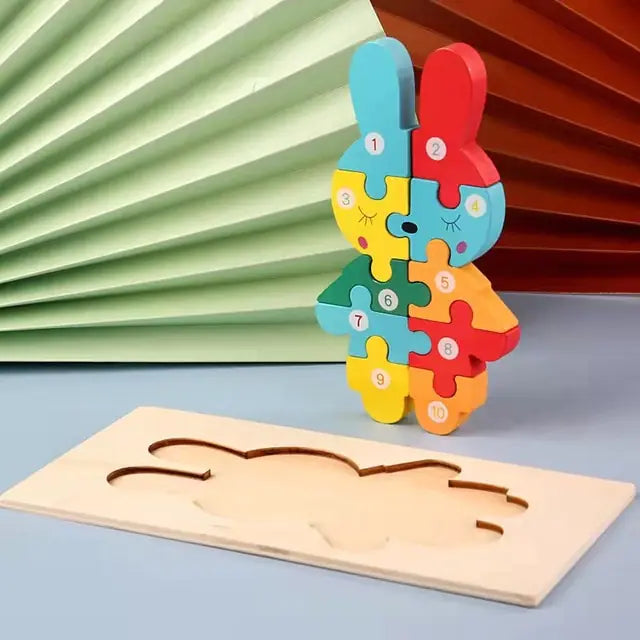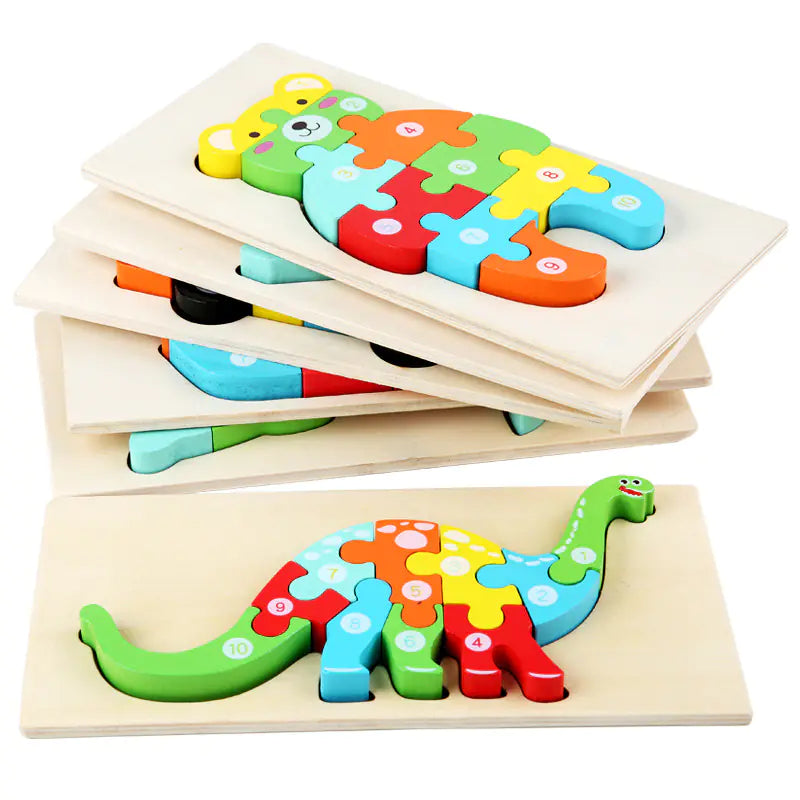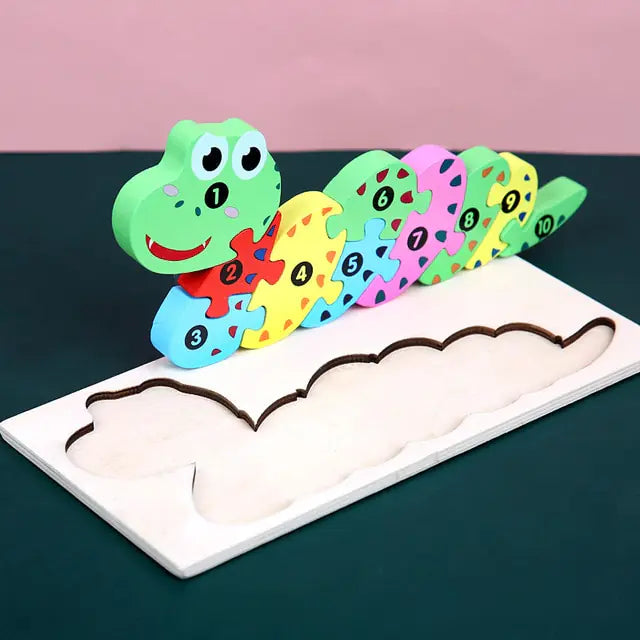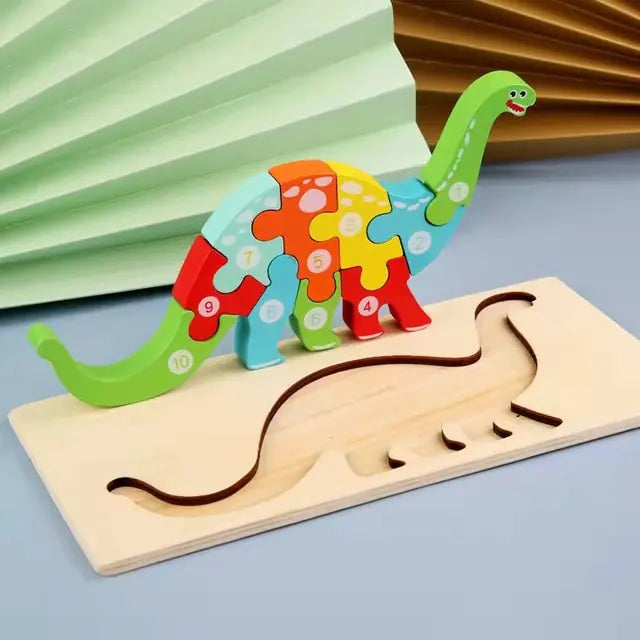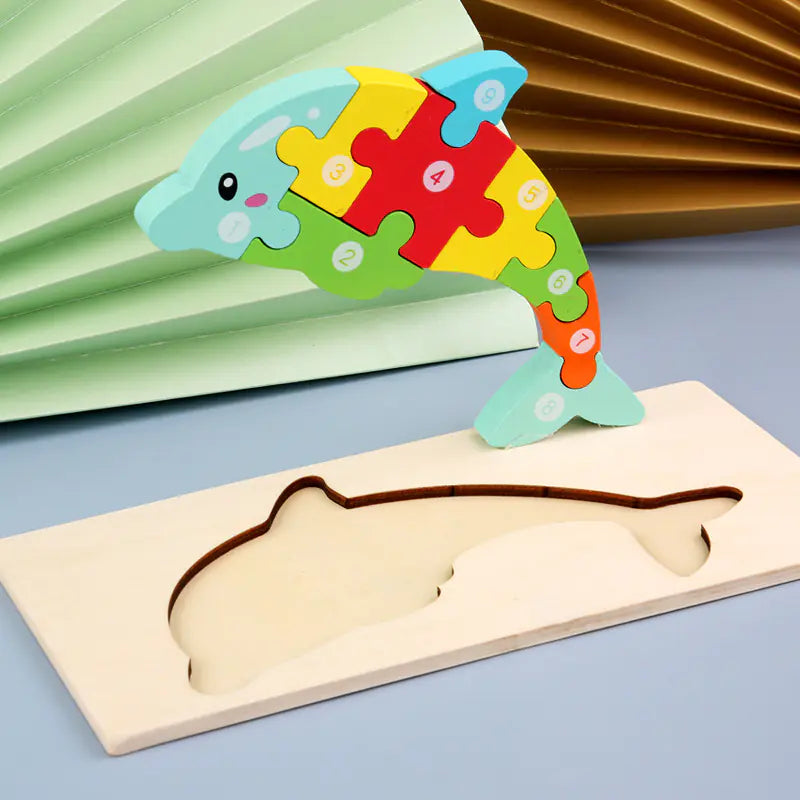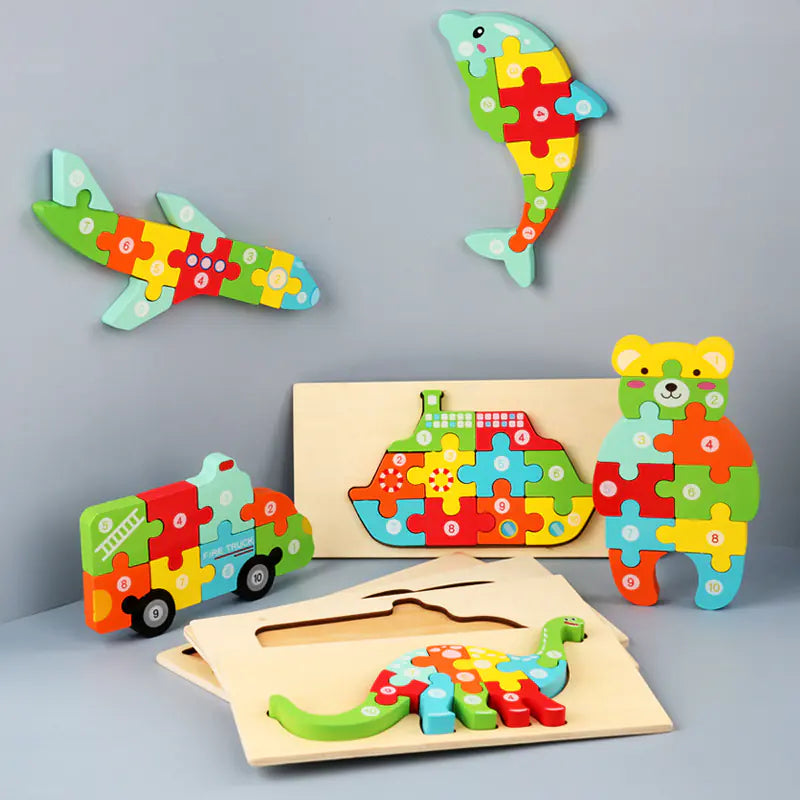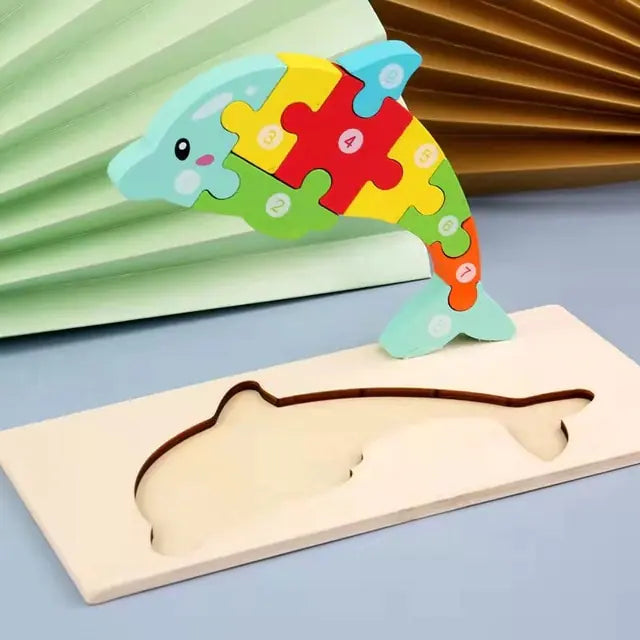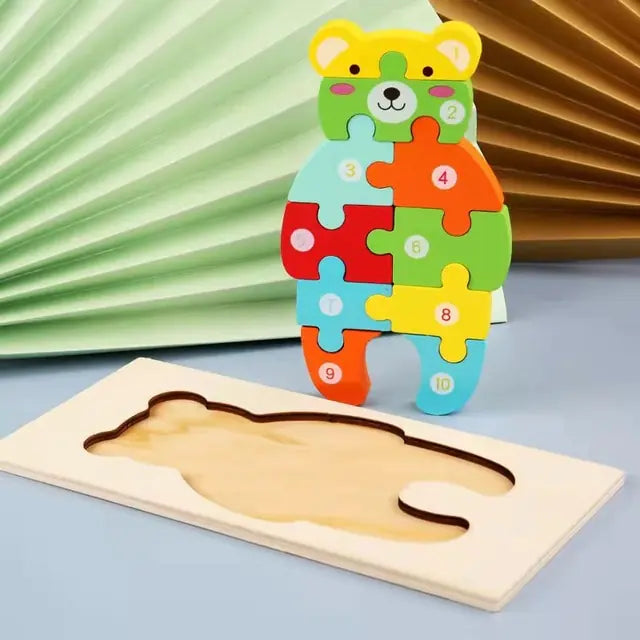Fostering creativity in children is a crucial aspect of their development, and learning toys play a significant role in this process. Parents and educators can help develop critical thinking and innovative skills from a young age by providing children with toys that challenge their imaginations and encourage problem-solving. This article explores various types of learning toys and their benefits, offering insights on how to use them to nurture creativity in children.
Unlocking Imagination with Learning Toys

Choosing Toys That Spark Creativity
When I hunt for toys that will light up my little one's imagination, I always look for options that encourage creative thinking. Toys that challenge and engage are the secret sauce to fostering creativity. It's not just about flashy gadgets; it's about finding toys that can be used in many ways, allowing kids to explore and create their narratives.
- Open-ended toys like building blocks and art supplies are a great start.
- Look for toys that can be used differently, not just one.
- Encourage toys that mimic real-life objects to inspire role-play.
Remember, the goal is to provide tools that empower our kids to think outside the box and come up with their own unique ideas. It's about giving them the freedom to explore and the space to grow their creative muscles.
Whether it's a set of colorful blocks that can become a castle, a spaceship, a zoo, or a simple doll that can inspire endless stories, suitable toys can make all the difference. And when I see my child deep in play, inventing scenarios I'd never imagine, I know I've hit the jackpot. It's not just play; it's the beginning of a lifelong journey of creativity and innovation. And isn't that what we all want for our kids? To see them build their worlds and solve problems with a spark of creativity that they discovered through play.
The Role of Pretend Play
As I watch my little ones get lost in their world of make-believe, I'm reminded of the power of pretend play. Educational toys play a crucial role in children's cognitive development, offering a canvas for their imagination. It's not just about having fun—these toys are tools for growth, unlocking young minds' potential for curiosity and exploration.
Pretend play isn't just a game; it's a complex social and cognitive exercise. When kids engage in role-playing, they're practicing language skills, learning to cooperate, and developing empathy. Here's a quick rundown of the benefits:
- Enhances language and communication skills
- Builds social and emotional understanding
- Sparks creativity and imagination
- Encourages problem-solving and critical thinking
By guiding our children through pretend play, we're setting them up for success in real life. It's a joy to see them negotiate roles, resolve conflicts, and express their thoughts and feelings in a safe and controlled environment.
When selecting toys for my toddlers, I always remember these are more than just playthings. They're the building blocks of their future. From nurturing creativity to enhancing cognitive skills, suitable toys can make all the difference. And let's not forget, the fun they have today is the learning they carry into tomorrow.
Encouraging Storytelling and Role-Playing
I've seen firsthand how educational toys that encourage storytelling and role-playing can be transformative for kids. They're not just playing but building worlds, characters, and narratives that foster their emotional intelligence and social skills. Toys like dolls, action figures, and playsets become the cast and stage for their imagination, allowing them to explore complex social scenarios in a safe and controlled environment.
- Dolls and action figures: Practice social skills and emotional expression
- Playsets: Create immersive worlds for storytelling
- Costumes: Encourage role-playing and empathy
By giving children the tools to create and tell their own stories, we empower them to understand and navigate the world around them.
It's incredible to watch a child's confidence grow as they lead their toys through adventures and challenges. They're not just learning to tell stories; they're learning to communicate, empathize, and solve problems. And the best part? They're having a blast doing it.
Building Brains with Blocks and Puzzles

Benefits of Construction Toys
I've always believed that playtime is more than just fun and games; it's a critical part of childhood development. Construction toys, like building blocks and interlocking sets, are prime examples of playthings that do double duty as educational tools. They're not just about stacking pieces together but about constructing a foundation for lifelong learning.
Construction toys offer a hands-on experience that encourages children to think creatively and solve problems. Here's a quick rundown of the benefits:
- Enhances spatial skills: Kids get a feel for shapes, sizes, and spaces, which is crucial for math and science learning.
- Fosters creativity: There's no limit to what can be built, which means endless possibilities for imaginative play.
- Develops fine motor skills: Picking up, placing, and manipulating small pieces strengthens hand-eye coordination.
- Encourages perseverance: Building something from scratch requires patience and determination, especially when it topples over and they must start again.
Remember, every block placed is a step towards building your child's confidence and cognitive abilities. It's not just a toy; it's a tool that shapes their understanding of the world.
According to a Medium article by Evans Daniel, these toys help enhance spatial skills and foster creativity in children. It's amazing how something as simple as blocks can unlock such complex skills. So next time you're toy shopping, consider the humble building block—it might just be the smartest investment you can make for your child's future.
Puzzle Play for Cognitive Development
I've always been fascinated by how puzzles challenge and grow our minds. Puzzles are a playground for the brain, where each piece fits into the larger picture of our cognitive development. They're not just toys but tools that sharpen our children's problem-solving skills and spatial reasoning.
Puzzle play is particularly effective for young learners. It's a hands-on experience that combines fun with a serious workout for the brain. Here's why I believe puzzles are a must-have in every child's toy box:
- Enhances problem-solving abilities: Kids learn to approach challenges from different angles.
- Develops fine motor skills: Picking up and placing puzzle pieces improves dexterity.
- Boosts memory: Remembering shapes and colors is essential to completing the puzzle.
- Encourages patience and attention to detail: Puzzles require focus and perseverance.
Puzzles are more than just pieces to fit together; they're stepping stones to greater cognitive abilities and the joy of achievement.
Remember, the goal isn't to rush through but to enjoy the journey of fitting each piece into its place. As parents, we can facilitate this by choosing age-appropriate and engaging puzzles. When our kids finally place that last piece, the pride in their eyes is the best reward.
Combining Fun and Learning with Interlocking Pieces
I've always believed that the best way to learn is through play, and interlocking pieces like Lego Duplo, magnetic tiles, and wooden blocks are a testament to that. These toys are more than just fun; they're a playground for the mind where creativity meets cognition.
Blocks and puzzles are the unsung heroes of cognitive development. They encourage creativity and problem-solving in toddlers, fostering imagination and critical thinking skills. As kids fit pieces together, they're not just building structures; they're building their brains.
Here's why I'm a fan:
- Hands-on learning experiences are invaluable.
- They help develop fine motor skills.
- The satisfaction of snapping pieces together is unmatched.
It's not just about the end result; it's the process of getting there that counts. The trial and error, the figuring out, and the eventual 'aha!' moment—it's all part of the fun.
And let's not forget the social aspect. When kids come together to build, they learn to collaborate and share ideas. It's a win-win situation where playtime becomes a rich learning opportunity.
Art and Craft Toys: Messy Play, Mighty Skills

Fostering Artistic Expression
I've always believed that the key to unlocking a child's creative potential lies in the simple joy of artistic expression. Art and craft toys are not just about making a mess but about discovering a world of colors, textures, and shapes. Watching little hands grasp a paintbrush for the first time or as tiny fingers mold shapes out of clay is incredible. These experiences are more than play; they're vital for developing fine motor skills and cognitive abilities.
Interactive musical toys, DIY art kits, sketching tools, and clay sets are more than just fun and games. They're the building blocks of creativity, helping children to develop fine motor skills and cognitive development through play and exploration. And let's not forget the sheer delight that comes from creating something from nothing—whether it's a squiggly line on a page representing a 'snake' or a lump of clay transformed into a 'treasure chest.'
Encourage your child to explore their artistic side with a variety of art supplies. From crayons to markers, and paint to clay, the possibilities are endless.
Here's a quick list of art supplies that can help foster creativity in your little one:
- Crayons and markers for colorful drawings
- Paints for exploring with brushes and textures
- Clay for sculpting and understanding three-dimensional forms
- Sketchbooks for capturing ideas and practicing designs
Remember, the goal isn't to create a masterpiece but to provide an outlet for expression and imagination. So, let's set the stage for our children to paint their paths and sculpt their dreams!
The Importance of Sensory Play
As I watch my little ones at play, I'm constantly amazed at how much they learn through their senses. Sensory play is a crucial part of childhood development, engaging not just the sense of touch but all five senses. It's about more than just feeling textures; it's about discovering the world.
Exploration, creativity, curiosity, and problem-solving are all ignited when kids get hands-on. Whether it's squishing playdough, splashing in the water, or listening to the sounds of a musical toy, each experience is building their cognitive and motor skills in a fun and engaging way.
Sensory play also promotes exploration, creativity, curiosity, and problem-solving. When your child engages their five senses, they're learning about the world.
Here's a quick list of sensory play benefits:
- Enhances memory
- Supports language development
- Encourages problem-solving skills
- Aids in developing and strengthening fine motor skills
Craft Kits That Teach Patience and Precision
I've seen firsthand how craft kits can be a game-changer for kids. They're not just about making something pretty; they're about the journey of creation. Craft kits require focus and patience; each step builds upon the last, leading to a rewarding masterpiece. This process teaches kids the value of precision and the satisfaction of seeing a project through to the end.
Italics aren't just for emphasis; they're a reminder that the skills learned through crafting—like fine motor skills and attention to detail—can translate to success in other areas of life. Here's a quick list of benefits:
- Enhanced concentration
- Improved hand-eye coordination
- A sense of accomplishment
- Development of planning and organizational skills
Remember, the beauty of craft kits lies in their ability to merge play with learning. They encourage children to slow down, engage with the task at hand, and take pride in their work.
Science and Discovery Toys: Little Explorers, Big World

Stimulating Curiosity with Science Kits
I've always believed that the best way to learn is by doing. That's why I'm a huge fan of science kits for kids. They're like a treasure chest of experiments that invite young minds to dive into the world of science.
Science kits aren't just about mixing chemicals in a test tube; they're about sparking that 'aha!' moment when a concept clicks. Here's what I love about them:
- They make complex scientific principles accessible and fun.
- Kids get hands-on experience with the scientific method.
- Every experiment is an opportunity to ask questions and seek answers.
Remember, the goal isn't to turn every child into a scientist—it's to cultivate a lifelong curiosity and the confidence to explore the unknown. That's the real magic of science kits.
And let's not forget the practical side of things. These kits teach kids to follow instructions, measure accurately, and document their findings—skills invaluable in academic and real-world settings.
Outdoor Exploration Gear for Young Adventurers
There's something truly magical about watching your child's eyes light up as they discover the wonders of nature. Encourage outdoor STEM learning with toys and educational exploration kits that are not just fun but also educational. Introduce toddlers to physics through water play, and watch as they learn about cause and effect in the most engaging way.
- Outdoor toys can transform your backyard into an adventure playground.
- Exploration gear like binoculars and magnifying glasses bring the natural world up close.
- Nature play is essential for developing problem-solving skills and resilience.
By providing the right tools, we can make our own backyards spaces that our kids never want to leave, fostering a love for the great outdoors.
When choosing these toys, it's essential to consider your child's age to ensure they are getting the most out of their playtime. For different age groups, there are age-appropriate STEM toys that can guide their developmental journey and make learning a seamless part of their play.
Interactive Learning with Tech Toys
As a parent, I'm always on the lookout for toys that not only entertain but also educate. That's where tech toys come into play. They're a game-changer in interactive learning, blending fun with real-world applications. For example, toys like IPANDA and Modbot allow kids to dive into virtual wildlife worlds or explore underwater realms while learning about natural habitats and robotics.
Tech toys are revolutionizing the way kids learn by providing immersive and educational experiences. They cater to a variety of interests, from techie tots to junior geniuses, and foster a love for STEM subjects. It's not just about screen time; it's about what they're engaging with on the screen.
With the integration of AR, VR, and AI, these toys offer personalized learning experiences that adapt to your child's pace and style of learning.
Here's a quick list of sensory-rich tech toys that can enhance your child's learning experience:
- AR-enabled storybooks
- Coding robots
- Interactive globes
- Virtual reality science kits
Remember, the key is to find toys that match your child's developmental stage and interests.
Musical Toys: Harmonizing Fun and Learning

Introducing Rhythm and Melody
I've always believed that music is a universal language that speaks to the heart and stirs the soul. It's why I'm so passionate about introducing kids to the world of rhythm and melody early on. Musical toys are more than just playthings; they're gateways to auditory development and a foundation for a lifelong appreciation of music.
Melody and rhythm can help children develop their auditory skills, which are crucial for language development and listening abilities. A simple drum or a toy piano can teach them about cause and effect as they discover that their actions can create sounds. Here's a quick list of benefits that musical toys provide:
- Enhancement of auditory and rhythm recognition
- Improvement in hand-eye coordination
- Boost in creativity and self-expression
By integrating musical toys into playtime, we're not just entertaining our kids; we're giving them tools to explore and understand the world of sound.
It's not just about the toys themselves but the experiences they foster. When a child tap out a beat or hum along to a tune, they learn patterns and sequences that are fundamental to cognitive development. And let's not forget the sheer joy of making music—something genuinely priceless.
Musical Instruments for Kids
Introducing kids to musical instruments is a game-changer when it comes to nurturing a love for music and enhancing cognitive skills. Playing an instrument can improve auditory skills and hand-eye coordination, not to mention it's a blast! Imagine your little one strumming a ukulele or tapping out rhythms on a drum set; it's not just adorable; it's educational.
- Here are a few instruments that are hit with the kids:
- Loog Wood Soprano Ukulele
- Donner DED-70 Electric Drum Set
- Pyle 1/4 Size Beginner Violin Starter Kit
- Meinl Percussion Jam Cajon Box Drum
- Best Choice Products Kids Electric Guitar
By choosing the right instrument for your child's age and interest, you're setting the stage for a lifelong appreciation of music. And let's not forget the sheer joy they'll get from making their own tunes. It's about creating those magical moments where play meets learning and development.
As a parent, I've seen firsthand how musical toys can foster independence in learning. A child absorbed in creating music is engaged in a powerful form of self-expression and autonomy. So, dive into the world of musical toys and watch your child's creativity soar!
The Educational Beat of Electronic Music Toys
As a parent, I've seen firsthand how electronic music toys can be a game-changer in a child's learning journey. These toys blend the joy of music with the benefits of technology, offering an interactive experience that can keep kids engaged for hours. With various sounds and rhythms at their fingertips, children can explore the world of music while developing their auditory and cognitive skills.
Electronic music toys are more than just playthings; they're tools that help kids understand the structure of music and rhythm. By pressing buttons, twisting knobs, or strumming fake strings, little ones are not only having fun but also enhancing their motor skills and hand-eye coordination.
- Encourages independent learning
- Improves motor skills
- Enhances cognitive development
- Introduces basic music concepts
It's incredible to watch your child create their first musical masterpiece, no matter how simple it may be. These moments of discovery and creativity are what make electronic music toys a valuable addition to any playroom.
Educational Games: Learning Can Be a Win-Win

Board Games That Teach Strategy
I've always believed that the best way to learn is through play; board games are a perfect example. Educational board games promote learning, creativity, and social skills in children through fun and interactive play. Tailored games enhance math, language, and cognitive development for different age groups.
- Chess teaches foresight and tactical thinking.
- Scrabble expands vocabulary and spelling skills.
- Monopoly offers lessons in money management and strategic planning.
Board games are not just a source of entertainment; they're a tool for intellectual and social growth. They encourage kids to think critically, make decisions, and understand the consequences of their actions in a safe and controlled environment.
Interactive sweatshirt puzzles and educational games enhance children's cognitive, physical, and fine motor skills while making learning fun and natural through play. It's a joy to see kids light up as they strategize their next move, learn to wait their turn, and negotiate with their peers—all essential life skills.
Educational Video Games: Playtime with a Purpose
I've always believed that learning can be as entertaining as any game, and with today's educational video games, it's a reality. These games are designed to be so much fun that kids don't even realize they're gaining valuable skills. One standout example is Scratch, a game that introduces kids to coding through block coding concepts. It has a simple interface that kids as young as 8 can easily navigate.
Educational video games offer a unique blend of learning and play, making them a powerful tool in our kids' developmental journey. They combine digital narratives' interactive features with traditional toys' tangible elements, creating dynamic learning experiences that adapt to our children's pace and style.
-
Benefits of Educational Video Games:
- Enhances problem-solving skills
- Encourages strategic thinking
- Improves memory and cognitive functions
- Teaches coding and programming basics
By integrating educational video games into playtime, we're not just keeping our kids occupied; we're preparing them for a future where digital literacy is as fundamental as reading and writing.
Card Games for Math and Memory Skills
I've always been a fan of card games for their ability to turn a family night into a brain-boosting bonanza. Card games are a stealthy form of education where kids sharpen their math and memory skills without realizing they're learning. Take '21 Best Math Card Games for Kids in 2024 - SplashLearn', for example; these games cover various mathematical concepts suitable for multiple age groups.
Card games are not just about fun; they're a playground for developing strategic thinking and improving concentration.
Here's why I think card games should be a staple in every household:
- They're portable and perfect for travel.
- They encourage social interaction and cooperative play.
- They're versatile, with endless games and variations to discover.
Remember, the key is to find games that are age-appropriate and engaging. With suitable card games, you're not just dealing out cards; you're dealing out opportunities for learning and growth.
Role of Parents in Playtime

Engaging with Your Child During Play
As a parent, I've learned that playtime isn't just about handing a toy to my child and letting them figure it out independently. It's about being there, participating, and guiding their exploration. Engaging with your child during play can significantly enhance their learning experience. By asking open-ended questions, you encourage them to think critically and express their thoughts. Here's a simple list of ways I make the most out of playtime:
- Ask questions that spark imagination, like "What do you think will happen if...?"
- Offer gentle guidance when puzzled, but let them find the solution.
- Celebrate their successes to build confidence.
- Introduce new concepts subtly to expand their knowledge.
Remember, your involvement should be a balance of support and freedom, allowing your child to explore and learn at their own pace.
The benefits of this approach are clear. Children feel supported and gain a deeper understanding of the toys they're playing with, whether it's a puzzle that teaches problem-solving or a set of blocks that introduces essential physics. By actively participating in their play, we lay the groundwork for a lifelong love of learning.
Setting the Stage for Creative Play
As a parent, I've learned that creating a play-based, active learning environment is crucial for my child's development. It's not just about handing them a toy and hoping for the best. It's about setting up a space where their imagination can run wild, and their curiosity can take the lead. Choosing age-appropriate toys and creating distinct play zones can make all the difference. Here's a quick guide on how to do it:
- Choose age-appropriate toys: Ensure the toys match your child's developmental stage.
- Create play zones: Designate areas in your home for different types of play.
- Follow Montessori principles: Encourage self-directed, hands-on learning.
- Rotate toys: Keep things fresh by changing out toys regularly.
- Introduce new skills: Use varied toys to develop different abilities.
By thoughtfully selecting and organizing toys, we can foster an environment that encourages children to explore, discover, and learn on their own terms. This approach not only supports their creative development but also builds their confidence as they master new skills.
Remember, our role is to guide and facilitate, not to dictate how play unfolds. By providing a stimulating learning environment, we're giving our kids the tools they need to develop into creative thinkers ready to tackle the challenges of the 21st century.
Balancing Guided Activities and Free Play
As a parent, I've seen firsthand how the right mix of guided activities and free play can work wonders for my child's creativity. Guided play, like structured puzzles or craft kits, teaches patience and precision, while free play allows kids to explore and express themselves on their terms. It's all about finding that sweet spot where learning meets fun.
- Here's how I strike a balance:
- I set aside specific times for structured play with educational toys focusing on a particular skill.
- I ensure my children have plenty of time to engage in open-ended play, where they can make their own rules and use their imagination.
- I observe and offer suggestions only when they seem to be running out of ideas or getting frustrated.
Remember, the goal is to create a playful environment that encourages your child to learn and grow, without making it feel like a chore. It's about nurturing their natural curiosity and letting them take the lead sometimes. After all, play improves problem-solving skills, enhances language development, encourages independence, and so much more!
Kids engage in eco-adventures, map-making, and creative play with art supplies, fostering imagination, creativity, and cognitive skills for more innovative development. Watching them discover new interests and abilities through this delicate dance of guidance and freedom is a joy.
Choosing Age-Appropriate Learning Toys

Understanding Developmental Stages
As a parent, I've learned that choosing suitable educational toys isn't just about the latest trends; it's about understanding where your child is developmentally. Age-appropriate toys can significantly enhance a child's learning experience. For instance, toddlers are often in the pre-use stage, where sensory exploration is critical. They benefit from toys that stimulate their senses and offer simple cause-effect scenarios.
By the time they reach the in-use stage, kids are ready for more complex tasks that involve fine motor skills and problem-solving. Construction toys and puzzles offer just the right challenge to keep their little brains buzzing.
Remember, the goal is to provide toys that match your child's developmental needs, encouraging growth without causing frustration.
Finally, as they age, children enter the post-use stage, where they can reflect on their play experiences to form deeper cognitive connections. Here, games that require strategy and planning are perfect for reinforcing the skills they've learned. Always remember the multi-stage toys that grow with your child, promoting development and reducing clutter in your home.
Toys That Grow with Your Child
I've always believed that the best toys are the ones that keep up with our kids as they grow. It's like they're part of the family, evolving and adapting to each new stage of development. Toys that grow with your child aren't just intelligent investments; they're companions on the journey of learning and discovery.
One of the key benefits of these toys is their ability to stimulate creativity over time. They encourage kids to explore new playing methods as they develop new skills. Here's a quick list of why these toys are a win-win:
- They offer a range of challenges that match your child's growing abilities.
- They can transform in complexity, keeping playtime fresh and engaging.
- They often come with adjustable features to suit different age groups.
Remember, the goal is to find that ultimate learning companion that not only has engaging features but also meets safety standards.
When selecting toys, consider how they can adapt to your child's development and encourage play-based learning. It's a journey worth taking, and the rewards are immense. Not only do these toys foster a love for learning, but they also become cherished keepsakes that remind us of our child's growth.
Safety Considerations for Different Age Groups
Selecting a suitable toy is paramount when keeping our little ones safe. Safety is not just about avoiding sharp edges or small parts; it's about choosing developmentally appropriate toys. For instance, toddlers are explorers who learn by doing—playing with push-and-pull toys works great for them. But as kids grow, their play needs evolve.
Maximize fun and learning with toys that grow with your child, balancing fun and educational value. Kids prefer simple, versatile toys that support cognitive development through play. Here's a quick checklist to keep in mind:
- Ensure toys meet safety standards and are free of toxic materials.
- Check for age-appropriate labels and follow them.
- Look for toys that can adapt as your child's skills improve.
Remember, the best toy for your child is one that matches their current stage of development and piques their curiosity.
STEM toys integrate play with education, offering age-appropriate challenges to engage children in learning. When selecting toys, consider age, complexity, safety, and interests. It's all about finding that sweet spot where playtime becomes a rich learning experience.
When nurturing your child's development, selecting suitable toys is crucial. We specialize in age-appropriate learning toys at Wonder Kids Toy Store that combine fun with educational value. Our multifunctional 3D puzzles are designed to enhance creativity, fine motor skills, and critical thinking. Don't miss out on providing your child with toys that foster growth and learning. Visit our website now to explore our collection and find the perfect toy for your little one!
Wrapping it up, it's clear that suitable toys can work wonders for a child's creativity. They're not just playthings, but the building blocks of imagination, the springboard for adventure, and the tools that help little minds discover big ideas. So, let's give our kids the gift of playing with purpose. Let's choose toys that challenge, inspire, and grow with them. After all, fostering creativity in our children today shapes tomorrow's innovators. And hey, if you ever need a hand-picking out the perfect brain-boosting toy, remember, Kidoclan's got your back!
